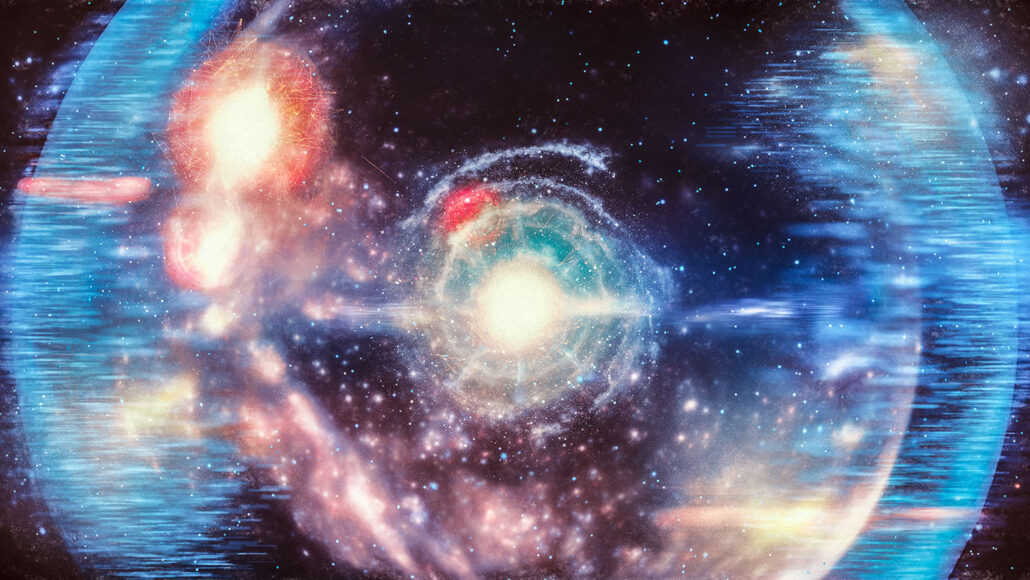Questions for ‘It all started with the Big Bang — and then what happened?’

The Big Bang is the name we use to describe the instant our universe exploded into existence.
gremlin/E+/Getty Images Plus; adapted by L. Steenblik Hwang
To accompany ‘It all started with the Big Bang — and then what happened?’
SCIENCE
Before Reading:
- What is the Big Bang? Describe what the Big Bang might have looked like to an observer.
- What does it mean when bread dough “expands”? What do scientists mean when they describe the universe as “expanding”?
During Reading:
- Explain the 1929 discovery made by astronomer Edwin Hubble that came to be known as Hubble’s law. What “mind-boggling” conclusion could astronomers draw from this observation?
- According to Marc Kamionkowski, what is indicated by getting “infinity as an answer”?
- What is cosmic background radiation? How is cosmic background radiation related to the Big Bang?
- What is the normal background temperature of this background radiation in kelvins?
- “One would expect the universe today to look like a fairly even spread of matter and energy,” says Eva Silverstein. But instead, matter and energy are dispersed throughout the universe in unexpected ways. Describe how matter and energy are actually dispersed.
- Regarding the Big Bang, what is the period of “inflation”?
- Astronomers often use raisin bread as an analogy for the universe. In this analogy, what happens to the dough as it is left on the countertop? How does the space between the raisins change? What do the raisins represent?
- What observation did Vera Rubin make in the 1970s that caused her to propose the existence of dark matter?
- What fraction of the universe do physicists estimate is composed of dark matter? Approximately what percent of the universe do physicists estimate is “regular” matter? What is believed to make up the rest?
- Why do scientists hope to spot gravitational waves that were created shortly after the Big Bang?
After Reading:
- Katelin Schutz says, “Right now, we’re thinking about dark matter as if it’s only one kind of particle,” but “dark matter could be as complex as visible matter.” What are the three main subatomic particles that compose atoms of “normal” matter? (If you aren’t sure, do a quick Google search.) In one sentence, describe how the subatomic particles are organized in an atom. Do you think dark matter is composed of different types of particles like “normal” matter? Explain why or why not.
- After reading this story, identify something scientists can measure that reveals clues about what happened in our universe’s past. Imagine an alien scientist in a distant galaxy (but the same universe) who also makes such measurements. What might the alien scientist learn about our shared universe using such measurements? Would the alien scientist likely come up with similar numbers to ours — or different ones? Explain your answer, drawing from what you learned in the story.